 W
WAmmazzacaffè is a small glass of liqueur usually consumed after coffee to dull its taste or the caffeine effect. It is a common Italian custom, especially after a generous tasty festive meal.
 W
WGiuditta Tavani Arquati was an Italian republican patriot, a notable figure in the Italian Risorgimento and a martyr for the cause of a United Italy.
 W
WThe Biblioteca Nazionale Centrale di Roma, in Rome, is one of two central national libraries of Italy, along with Biblioteca Nazionale Centrale di Firenze in Florence. In total, 9 national libraries exist, out of 46 state libraries.
 W
WThe Biblioteca nazionale Vittorio Emanuele III is a national library of Italy. It occupies the eastern wing of the 18th-century Palazzo Reale in Naples, at 1 Piazza del Plebiscito, and has entrances from piazza Trieste e Trento. It is funded and organised by the Direzione Generale per i Beni Librari and the Ministero per i Beni e le Attività Culturali.
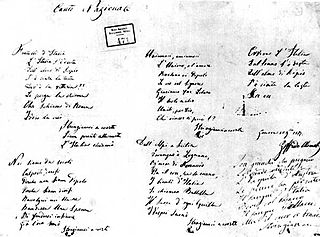 W
W"Il Canto degli Italiani" is a canto written by Goffredo Mameli set to music by Michele Novaro in 1847, and is the current national anthem of Italy. It is best known among Italians as the Inno di Mameli, after the author of the lyrics, or Fratelli d'Italia, from its opening line. The piece, a 4/4 in B-flat major, consists of six strophes and a refrain that is sung at the end of each strophe. The sixth group of verses, which is almost never performed, recalls the text of the first strophe.
 W
WThe Carta nazionale dei servizi (CNS) is an Italian personal document which is placed alongside the Italian electronic identity card.
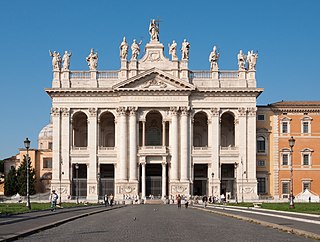 W
WThe Italian Catholic Church, or Catholic Church in Italy, is part of the worldwide Catholic Church in communion with the Pope in Rome, under the Conference of Italian Bishops. The pope serves also as Primate of Italy and Bishop of Rome. In addition to Italy, two other sovereign nations are included in Italian-based dioceses: San Marino and the Vatican City. There are 225 dioceses in the Catholic Church in Italy, see further in this article and in the article List of Catholic dioceses in Italy.
 W
WDionisio Cimarelli is an Italian sculptor known for contemporary figurative sculptures in Chinese porcelain and a sculpture of Matteo Ricci. He currently teaches at The Art Students League of New York, as Adjuct Sculpture Faculty at Fashion Institute of Technology and as Adjunct Sculpture Faculty at New York Academy of Art in New York City.
 W
WThe cockade of Italy is the national ornament of Italy, obtained by folding a green, white and red ribbon into a plissé using the technique called "plissage" (pleating). It is one of the national symbols of Italy and is composed of the three colours of the Italian flag with the green in the center, the white immediately outside and the red on the edge: this convention on the position of colours derives from the cockades used in Bologna in 1794 during an attempt of revolt, which had this chromatic composition. The cockade with the red and green inverted position is instead that of Iran.
 W
WThe Da Vinci family Italian family from Vinci, Tuscany.
 W
WThe Dante Alighieri Society is a society that promotes Italian culture and language around the world. Today this society is present in more than 60 countries.
 W
WDuecento is the Italian word for the Italian culture during the 13th century.
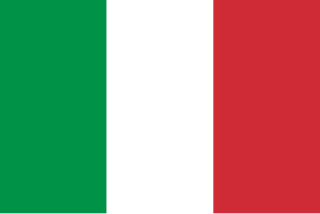 W
WThe flag of Italy, often referred to in Italian as il Tricolore, is the national flag of Italian Republic. It is a tricolour featuring three equally sized vertical pales of green, white and red, national colours of Italy, with the green at the hoist side, as defined by article 12 of the Constitution of the Italian Republic. The Italian law regulates its use and display, protecting its defense and providing for the crime of insulting it; it also prescribes its teaching in Italian schools together with other national symbols of Italy.
 W
WThe gonfalon, gonfanon, gonfalone is a type of heraldic flag or banner, also known as Salebi often pointed, swallow-tailed, or with several streamers, and suspended from a crossbar in an identical manner to the ancient Roman vexillum. It was first adopted by Italian medieval communes, and later, by local guilds, corporations and districts. The difference between a gonfanon with long tails and a standard is that a gonfanon displays the device on the non-tailed area, and the standard displays badges down the whole length of the flag.
 W
WThe House of Medici was an Italian banking family and political dynasty that first began to gather prominence under Cosimo de' Medici in the Republic of Florence during the first half of the 15th century. The family originated in the Mugello region of Tuscany, and prospered gradually until it was able to fund the Medici Bank. This bank was the largest in Europe during the 15th century, and it facilitated the Medici’s rise to political power in Florence, although they officially remained citizens rather than monarchs until the 16th century.
 W
WThe Iron Crown of Lombardy is a reliquary and might be one of the oldest royal insignias of Christendom. It was made in the Early Middle Ages, consisting of a circlet of gold and jewels fitted around a central silver band, which tradition held to be made of iron beaten out of a nail of the True Cross. In the medieval Kingdom of Italy, the crown came to be seen as a relic from the Kingdom of the Lombards and was used as regalia for the coronation of the Holy Roman Emperors as kings of Italy. It is kept in the Cathedral of Monza, near Milan.
 W
WItalia turrita is the national personification or allegory of Italy, in the appearance of a young woman with her head surrounded by a mural crown completed by towers. It is often accompanied by the Stella d'Italia, from which the so-called Italia turrita e stellata, and by other additional attributes, the most common of which is the cornucopia. The allegorical representation with the towers, which draws its origins from ancient Rome, is typical of Italian civic heraldry, so much so that the wall crown is also the symbol of the cities of Italy.
 W
WAn Italian charm bracelet is a series of individual modular links hooked together on a stretchy band to form a single charm bracelet. A typical Italian charm bracelet comprises eighteen Italian charm links. Each link features an Italian charm face soldered onto the actual Italian charm link.
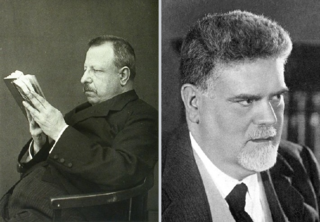 W
WItalian idealism, born from interest in the German one and particularly in Hegelian doctrine, developed in Italy starting from the spiritualism of the nineteenth-century Risorgimento tradition, and culminated in the first half of the twentieth century in its two greatest exponents: Benedetto Croce and Giovanni Gentile.
 W
WItalian Contemporary art refers to painting and sculpture in Italy from the early 20th century onwards.
 W
WItalian nationalism is a movement which claims that the Italians are a nation with a single homogeneous identity, and therefrom seeks to promote the cultural unity of Italy as a country. From an Italian nationalist perspective, Italianness is defined as claiming cultural and ethnic descent from the Latins, an Italic tribe which originally dwelt in Latium and came to dominate the Italian peninsula and much of Europe. Because of that, Italian nationalism has also historically adhered to imperialist theories. The romantic version of such views is known as Italian patriotism, while their integral version is known as Italian fascism.
 W
WThe six-hour clock, also called the Roman or the Italian system, was a system of date and time notation in Italy which preceded the modern 24-hour clock. In this system, the day starts at the evening Ave Maria at the end of twilight, approximately half an hour after sunset, and the following 24 hours are divided into four cycles of six hours each.
 W
WA variety of units of measurement were used in the various independent Italian states and Italian dependencies of foreign empires up to the unification of Italy in the 19th century. The units to measure length, volume, mass, etc., could differ widely between countries or between towns in a country, but usually not between a country and its capital.
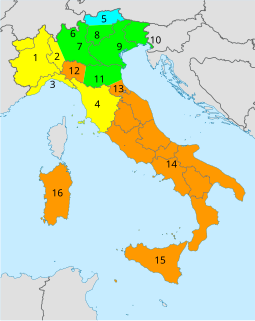 W
WPlaying cards have been in Italy since the late 14th century. Until the mid 19th century, Italy was composed of many smaller independent states which led to the development of various regional patterns of playing cards; "Italian suited cards" normally only refer to cards originating from northeastern Italy around the former Republic of Venice, which are largely confined to northern Italy, parts of Switzerland, Dalmatia and southern Montenegro. Other parts of Italy traditionally use traditional local variants of Spanish suits, French suits or German suits.
 W
WItalianization is the spread of Italian culture, language and identity by way of integration or assimilation.
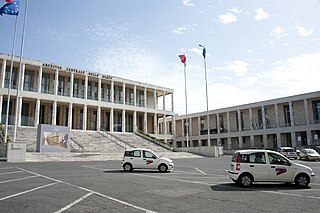 W
WThe Central Archives of the State are the main national archives of Italy. They were created in 1875 under the name of Royal Archives. They took their present name in 1953. They are located in EUR, Rome and are put under the responsibility of the Ministry of Culture.
 W
WThe List of cultural icons of Italy is a list of links to potential cultural icons of Italy.
 W
WThe Manifesto of Futurism is a manifesto written by the Italian poet Filippo Tommaso Marinetti and published in 1909. Marinetti expresses an artistic philosophy called Futurism that was a rejection of the past and a celebration of speed, machinery, violence, youth and industry. It also advocated the modernization and cultural rejuvenation of Italy.
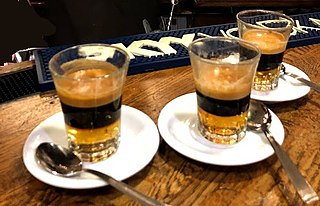 W
WMoretta is a typical hot coffee from Fano, in the Province of Pesaro and Urbino, Italy, and is popular in the fishing areas near the coast. It is strong and sweet, and usually drunk after meals as a digestive, or used as a hot drink on cold afternoons.
 W
WI Borghi più belli d'Italia is an association of small Italian towns of historical interest, that was founded in March 2001 on the initiative of the Tourism Council of the Associazione Nazionale Comuni Italiani, with the aim of preserving and maintaining villages of quality heritage. The association holds initiatives such as festivals, exhibitions, fetes, conferences and concerts that highlight the cultural, historical, gastronomic and linguistic heritage, involving residents, schools, and local artists.
 W
WThe Polada culture is the name for a culture of the ancient Bronze Age which spread primarily in the territory of modern-day Lombardy, Veneto and Trentino, characterized by settlements on pile-dwellings.
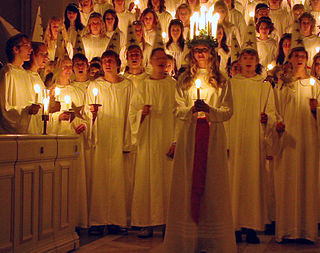 W
WSaint Lucy's Day, also called the Feast of Saint Lucy, is a Christian feast day observed on 13 December. The observance commemorates Lucia of Syracuse, an early-4th-century virgin martyr under the Diocletianic Persecution, who according to legend brought food and aid to Christians hiding in the Roman catacombs, wearing a candle lit wreath on her head to light her way and leave her hands free to carry as much food as possible. Her feast day, which coincided with the shortest day of the year prior to calendar reforms, is widely celebrated as a festival of light. Falling within the Advent season, Saint Lucy's Day is viewed as a precursor of Christmastide, pointing to the arrival of the Light of Christ in the calendar on Christmas Day.
 W
WSelf-managed social centres in Italy exist in many cities. They are part of different left-wing political networks including anarchist, communist, and autonomist. The centres tend to be squatted and provide self-organised, self-financing spaces for alternative and noncommercial activities such as concerts, exhibitions, farmers' markets, infoshops, and migrant initiatives. Over time, some but not all projects have opted to legalize their status.
 W
WTerrone is an Italian term to designate, in an often pejorative manner, people who dwell in Southern Italy or are of Southern Italian descent.